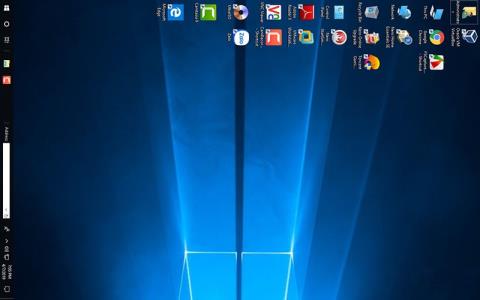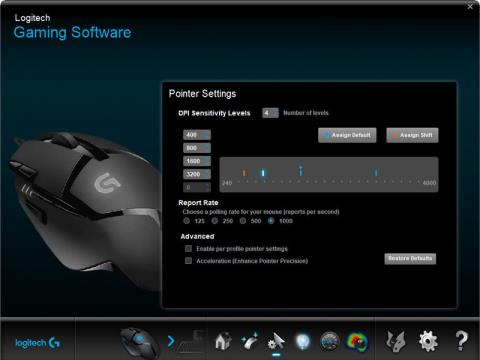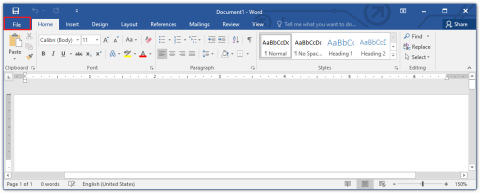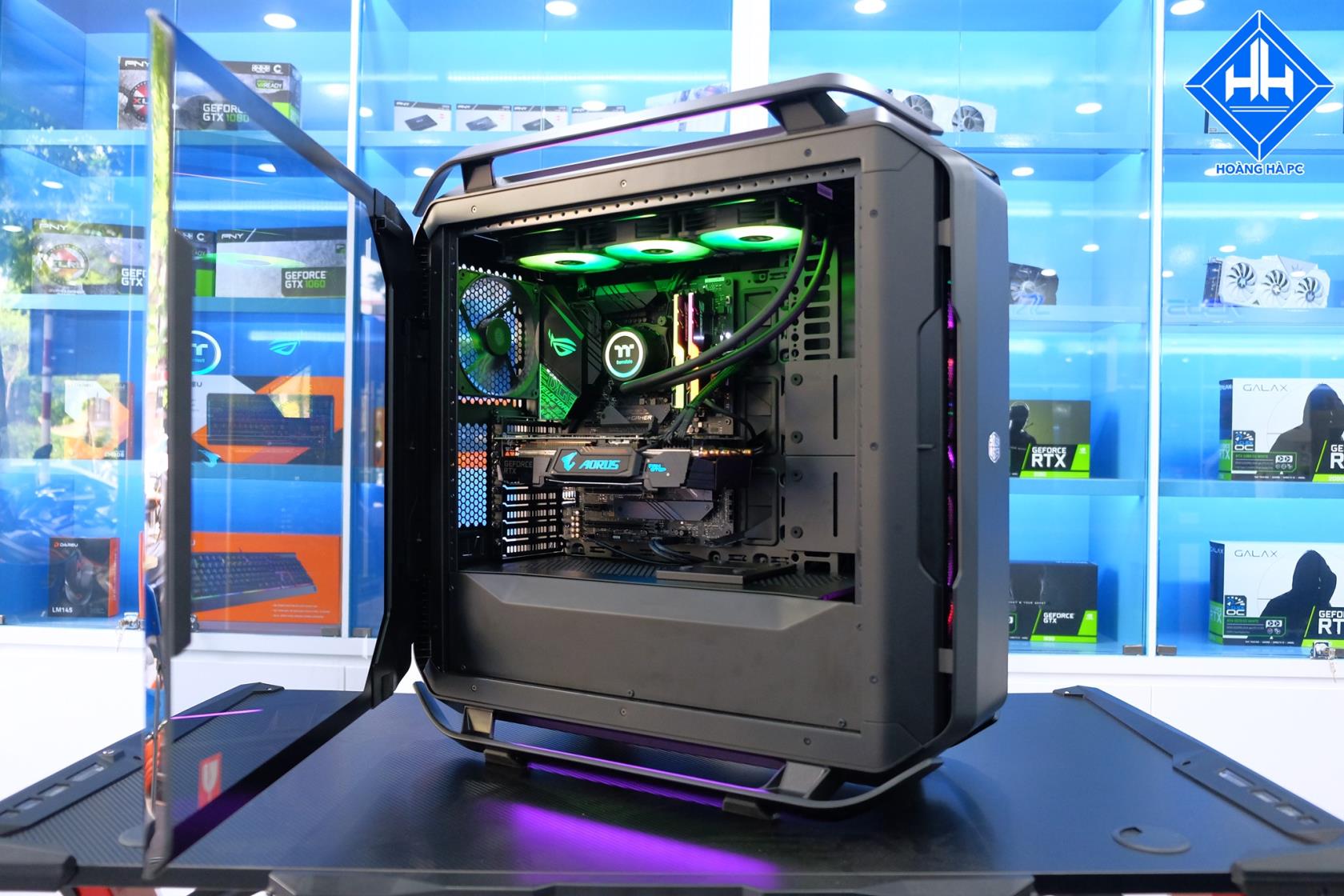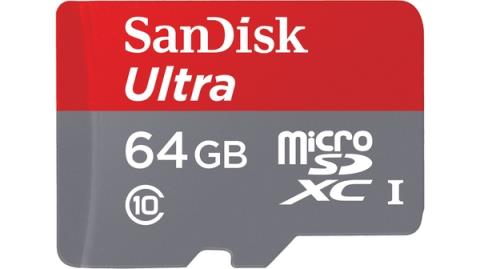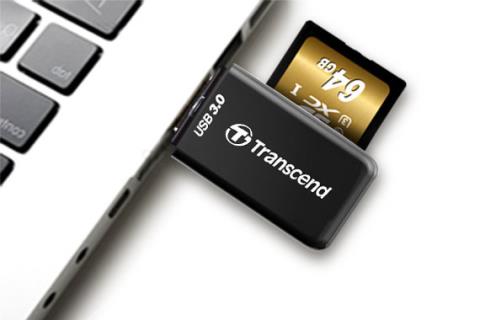Which Dell Laptop Line is Best, Should Buy and Use Today?

You are wondering which Dell laptop is the best, should buy today. So, let's take a look at the detailed answer right in the content below.
Are you looking for a high-end range extender that can help you extend the coverage of your wireless network to those remote corners of your house or office? Then you will want a device with support for the 802.11ac networking standard that can offer fast transfers, and TP-LINK RE580D is one of the fastest devices of its kind. We tested this dual-band range extender for about a week and, after many tests and measurements, we are ready to share our opinion, in this review:
Contents
Unboxing the TP-LINK RE580D AC1900 Wi-Fi range extender
The packaging used for the TP-LINK RE580D AC1900 range extender uses calm green colors. On the front of the box you see a picture of the device and a list with its most important features.

TP-LINK RE580D, range, extender, AC1900
On the back there's a detailed presentation of what this product does, as well as a comparison with other similar devices from TP-LINK's portfolio.
Inside the box you will find the following elements: the range extender, 3 detachable antennas, the power adapter, a network cable, the quick installation guide, the product license, technical support information and the warranty.

TP-LINK RE580D, range, extender, AC1900
Now that you know about the unboxing experience, let's see what you get in terms of hardware and specifications.
Hardware specifications and design
TP-LINK RE580D is the company's top range extender in their 2016 portfolio of networking products. It features a dual core processor running at 1 GHz. Unfortunately we don't know the exact model but it might just be the Broadcom BCM4709 that is used on several of the company's wireless routers. Also, the amount of RAM memory on this device is unknown. The advertised total maximum bandwidth is an impressive 1900 Mbps, split as follows: 600 Mbps for the 2.4 GHz wireless band and 1300 Mbps for the 5GHz wireless band. The three external antennas are dual band and the range extender uses the beamforming technology to ensure highly targeted and efficient wireless connections.
TP-LINK RE580D looks like a wireless router, which in our view, is a good thing, as its design is quite elegant. It's also similar to wireless routers in terms of external antennas as well as Ethernet ports.
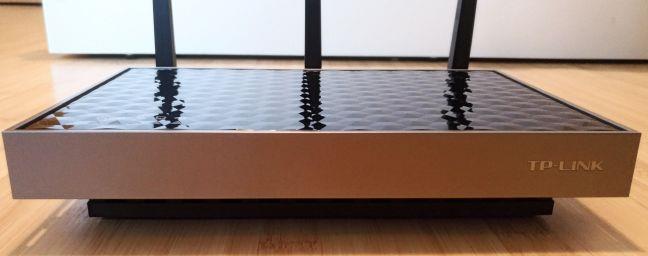
TP-LINK RE580D, range, extender, AC1900
On the back of the device you will find five Gigabit ports, as well as plenty of buttons for things like: resetting the range extender, turning WPS on, turning the LEDs on and off and turning the device on and off. Alongside these buttons we also have the power jack.
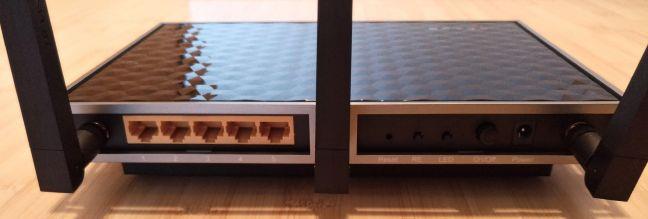
TP-LINK RE580D, range, extender, AC1900
The range extender can be used both horizontally and vertically. To use it vertically, find the provided base support, insert its clips into its marked slots marked and then push it leftwards. Again, this is the kind of flexibility that you tend to get from wireless routers, not range extenders.
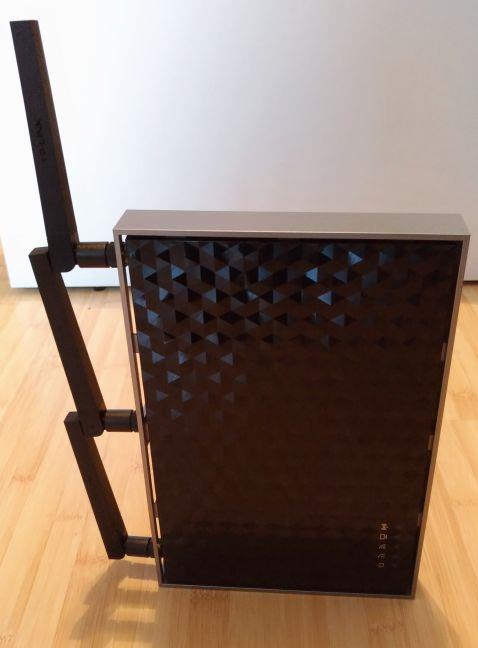
TP-LINK RE580D, range, extender, AC1900
When it comes to standards support, TP-LINK RE580D work with all the modern standards: 802.11ac, 802.11n down to 802.11b. Obviously, it is compatible with just about any wireless router, no matter the brand and with all the major operating systems, from Linux to Mac OS X to Windows.
In terms of size, TP-LINK RE580D has the following dimensions: 9.5 inches or 242 mm in width, 6.4 inches or 162 mm in depth and 1.7 inches or 44 mm in height. The device weighs 3.9 pounds 1.8 kgs with the three antennas mounted, as well as the base support.
If you want to read the official specifications of this device, go to this page: TP-LINK RE580D Specifications.
Setting up and using the TP-LINK RE580D AC1900 Wi-Fi range extender
Setting up the TP-LINK RE580D range extender is similar to other devices of its kind: you connect to a computer using the Ethernet cable that's found in the packaging or you turn it on and connect from a laptop or tablet to the default wireless network that it broadcasts. Then, you launch a web browser and go to "http://tplinkrepeater.net" and start configuring the device. We liked that it asks the user to change the default username and password, so that unwanted parties will have a hard time accessing your range extender.
The next step is to choose the region you're from and then to select the two wireless networks that you want to extend: the 2.4 GHz wireless network and the 5GHz wireless network.
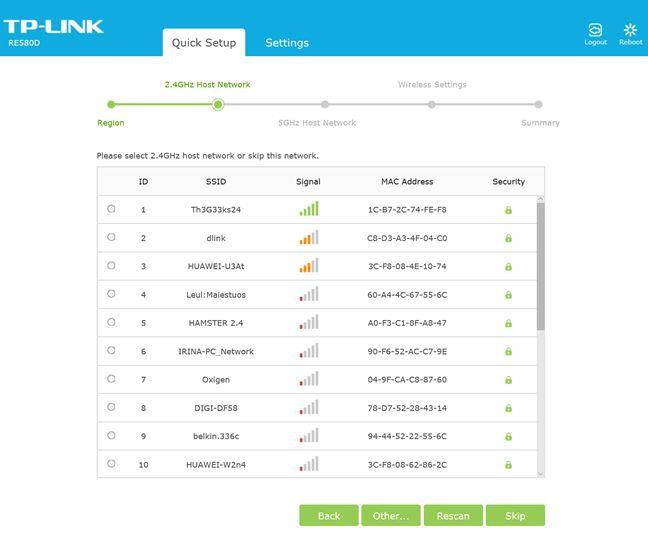
TP-LINK RE580D, range, extender, AC1900
You then set the name for the two WiFi networks that are broadcast by the range extender and a summary is shown of all your initial settings.
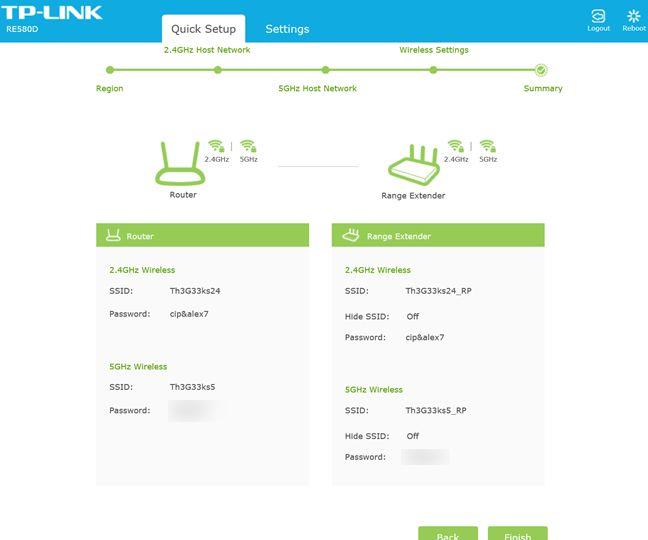
TP-LINK RE580D, range, extender, AC1900
You can now start using TP-LINK RE580D. However, we recommend that you continue by accessing its more advanced settings and configuring absolutely everything. When you log into its user interface, you will notice the following aspects:
One of the steps that you should take into consideration is checking for firmware updates and installing them. This is easy to do and it will improve the experience you get when using this device. Before doing our testing, we updated the TP-LINK RE580D to the latest firmware version that was available at the time.
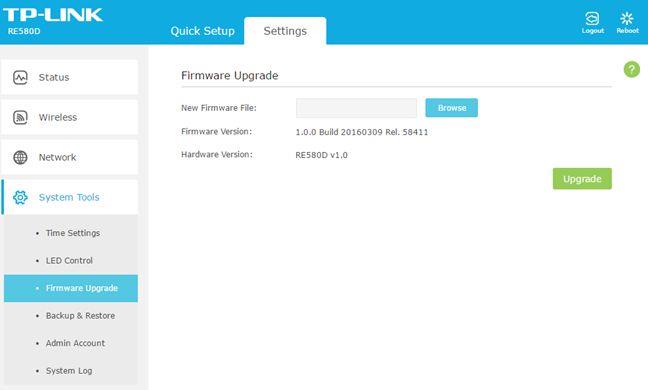
TP-LINK RE580D, range, extender, AC1900
TP-LINK brags on its website about a mobile app that it offers for managing this device. The app looks good and makes it easy to configure the functioning of the range extender from your smartphone with iOS and Android. Below you can see a screenshot of a list of its main features.
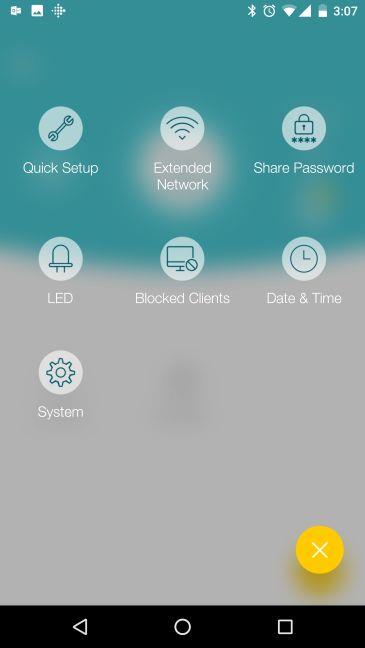
TP-LINK RE580D, range, extender, AC1900
Unfortunately, at least on Android, this app asks for permissions that it shouldn't request, like managing your phone, contacts and storage. Why does it have to get access to my contacts? Why does it want to manage my storage when you can't use it to download files from your range extender or your network?

TP-LINK RE580D, range, extender, AC1900
We have serious privacy concerns about this app and we don't recommend that you use it. Another downside that we encountered was the lack of USB ports and the fact that we couldn't set the range extender to broadcast a separate network for our guests.
Once we were done configuring the range extender, we moved on to connecting our devices to it and testing how well it works. We did not encounter connectivity or stability issues. We were able to join or create a Homegroup in Windows, share files on the network, stream video and so on. Also, we were very pleased by how fast our wireless connection was on the 5GHz band so we couldn't wait to test things more thoroughly.
This range extender tends to remain quite cool, even after extended periods of use, and this may be an important feature for users who need to place it in warmer environments.
While using it, you notice that its LEDs are quite discreet . However, if you don't want to be bothered by them, you can turn them off using a button on the back of the device or from its firmware.
The shiny surface on the top of the range extender looks very nice but it is also a dust and fingerprint magnet, so you may need to dust it relatively often.
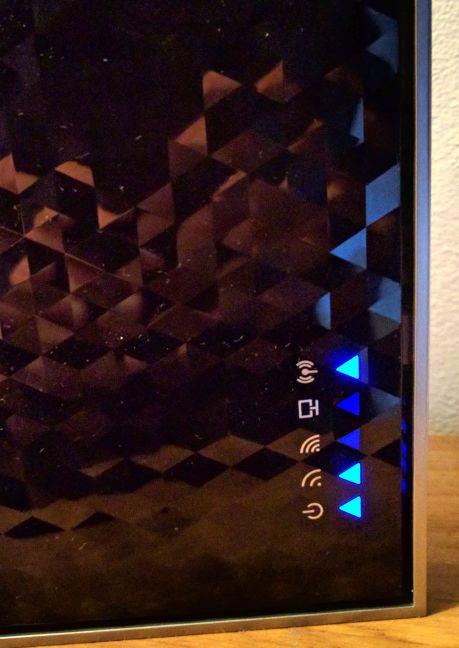
TP-LINK RE580D, range, extender, AC1900
This is all we had to say about the user experience offered by this device. If you would like to learn how fast the wireless networks that are broadcast by TP-LINK RE580D are, its extra features and our final verdict, go to the next page of this review.
You are wondering which Dell laptop is the best, should buy today. So, let's take a look at the detailed answer right in the content below.
Your computer screen can be completely rotated horizontally, vertically if you know how. The information below will help you adjust quickly.
Intel UHD Graphics 620 is a hot onboard graphics card recently. So what makes this product stand out from other cards on the market?
You are looking to refer to the current popular msi laptop line. So which country's msi laptop? Is the quality good or not? With WebTech360 for reference.
What is the difference between a gaming mouse and a regular mouse? Let's learn more about this issue with WebTech360 through the article below!
Simple and effective ways to convert DOCX to DOC you can try at home. Please refer to the article of WebTech360!
What is the integrated graphics card in the CPU? Integrated graphics cards possess many advantages that are highly appreciated by users. Why do so many people choose this card?
Copiers are increasingly improving in quality and price. Each copier will have a different configuration and price to meet consumer needs.
Instructions for Downloading .Net Framework and how to install it easily and quickly for the machine to be able to use after only a few minutes.
What is Bypass? Advantages and disadvantages and the most accurate and effective way to identify IDs. All of the above questions will be answered in the article below.
Memory cards are small in size but have massive storage capacity and are convenient to use. So what are the top 64GB memory cards that are most commonly used?
The memory card reader is not only a tool to help the memory card transfer data, but also to preserve and prevent card loss. So which is the best type of memory card head?
Installing printers for computers and laptops is a permanent requirement for office workers. Are there easy and fast ways to install on both devices?
Laptop freeze is a common phenomenon when using the computer for a long time. Join WebTech360 to discover how to fix a frozen laptop through the following article.
Do you ever wonder if it’s possible to buy TikTok likes after watching a video with thousands of them? Come explore the realm of social media and learn can you buy TikTok likes and how buying these likes can boost your presence on social media.
Fueled by mounting interest and intrigue, Delta-10 gummies have seen a surge in popularity as cannabis connoisseurs scour the market for new experiences.
Stair lift rentals are an option for individuals who require assistance with mobility due to age, injury or disability. Stair lifts can provide a solution that allows individuals to safely and independently access different levels of their homes without the need for costly renovations.
You must exert every effort as a property owner to protect your investment. That means keeping your property in good condition and ensuring it is always safe and habitable for tenants.
Renting out your home is a perfect way to supplement your salary. If you have an empty room, renting it out helps you make money while still owning it, which is a win-win scenario
Triple Protector is a Samsung TV's built-in protection technology to increase the durability of the TV against lightning, moisture, and electric shock.
